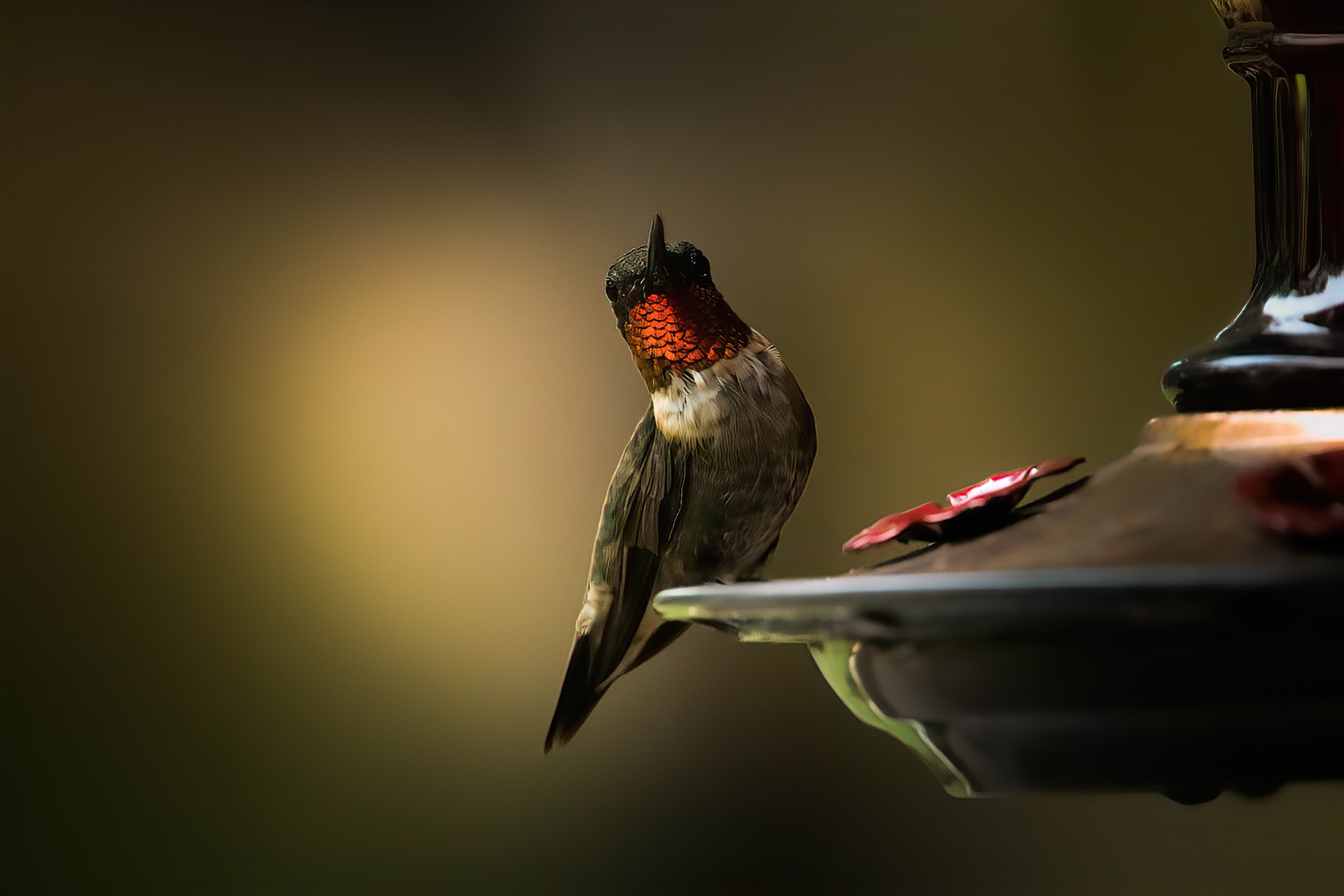On a recent birding adventure to Griffith Woods Park, Elaine and I were pleasantly surprised. While taking photos of a Northern Rough-winged Swallow, there was a much smaller bird perched on a second dead branch on this shared aspen tree. A closer study revealed a bird we don’t often see or pursue with “twitcher” fervour.
As our shutters added megapixel pictures to our memory cards, it became apparent that this hummingbird was unique. Generally three hummingbird species visit our province: the Ruby-throated, the Calliope and the Rufous. Three additional species, the Black-chinned, the Anna’s and the Costa’s make very rare appearances, likely catching a wrong flight into Alberta. The Ruby-throated is most commonly seen by birders and non-birders alike. One place Elaine and I have watched for them is the Ellis Nature Centre in Lacombe County. There is a well designed wildflower area to attract hummingbirds located beside the interpretative centre.
Although each of the three main visiting species are distinctive in appearance, when two of these species interbreed, some dominant features of each create a unique hummingbird, a hybrid. After downloading our photos and examining the hummingbird closely, we suspected we were in the presence of a hybrid. Sending a photograph to a local birding expert, our hunch was confirmed. The hybrid had characteristics of both the Rufous and Ruby-throated species.
Wondering how often this occurred, we learned that hummingbird hybridization occurs more in western Canada and the United States, as multiple species share the same ranges and habitats. It has been estimated that 0.1% of wild hummingbirds are first filial generation or “F1” hybrids. Birders and scientists alike must rely on vocalizations or calls, careful observation and in some cases, use genetic testing to identify the parent species. Factors such as a change in habitat or migration patterns may help explain why generally this territorial species may interbreed. Thinking that hybridization might be rare, further exploration in the literature brought for us, a surprising discovery. Up to 10% of the world’s 10,000 bird species can be identified as having been involved in interbreeding. In our own birding records we’ve identified eight unique species pairings resulting in hybridization, with the majority involving ducks.
Scientists indicate that there are potential advantages for hybridized birds. New gene and allele combinations can be beneficial for adaptation to new or changing environments. The transfer of advantageous genes can help a bird population’s odds to survive such change. New species may also be an outcome of hybridization. The increased genetic diversity may also improve the immune system of the bird species. Negative outcomes are possible as well, including the loss of unique genetic characteristics in a rare species, a loss of fitness for an environment, sterility and the hybrid bird(s) may compete with the parents for resources including habitat.
The complexity of nature can produce feathered surprises for any bird watcher. Hybrids add the unexpected during those walks in parks. Griffith Woods Park truly put a hum in our song and added visual memories to share with you, our readers.
Photo Credits
Hybrid Photos (2) – Don; Rufous (1) – Elaine Ruby-Throated (1) – GeorgiaLens
Hybrid Hummers?

In response to Canada's Online News Act and Meta (Facebook and Instagram) removing access to Canada's local news from their platforms, Anchor Media Inc encourages you to get your news directly from your trusted source by bookmarking this site and downloading the Rogue Radio App. Send your news tips, story ideas, pictures, and videos to info@anchormedia.ca.






